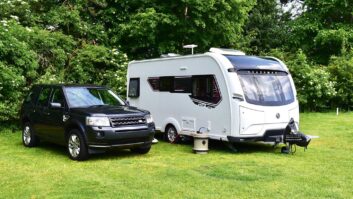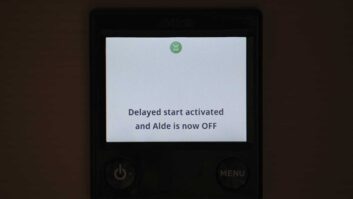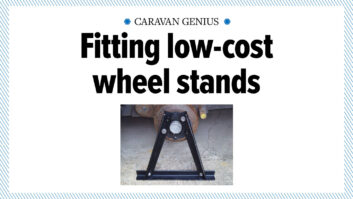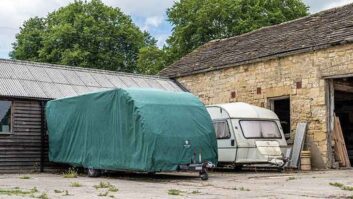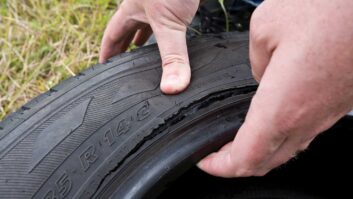IF YOU’RE NOT GOING to use your caravan during the colder months you’ll need to protect it from the elements. Doug “Fix-it” King shows you how…
1. Wash the caravan’s exterior and then go over it with a diluted solution of Fenwick’s Overwintering to protect the paintwork.
This product is easily removed with Fenwick’s Caravan Cleaner come the spring.
2. Fit winter covers to the fridge ventilator grilles.
They will minimise the risk of the refrigerant freezing if the temperature drops below 0˚C.
3. Clean and thoroughly dry the interior of the fridge and all lockers, especially those used to store food.
Leave all the doors open for air to circulate.
4. Items left in storage under the seats may be left if they are not affected by damp.
But remove the cushions and open the lids for the air to circulate.
5. Open the taps and drain the water system, including the toilet’s fresh water tank and the inboard or under-floor water tank.
Close the drain taps but leave the kitchen and bathroom taps open. Turn off the gas at the cylinders.
6. Inflate the tyres to the correct pressure and cover them with polythene.
Check the pressures regularly and inflate as necessary. Leave the handbrake off to prevent the brakes from freezing or seizing on the drums. Chock the wheels. Occasionally turn the wheels to prevent the tyres getting a flat edge from the weight of the van.
7. If the caravan is connected to the mains, leave a small fan heater running on its frost setting.
The electricity will cost much less than repairing the damage caused by damp. Otherwise, put a couple of moisture absorbers in the van and check the crystals regularly, changing them when necessary.
8. Park the caravan with the nose down slightly.
This will slow down would-be thieves, who will have to raise the rear steadies before they are able to hitch up your van. Fit rear steady locks, which will further dissuade them from trying. Mainly though, this stops water pooling on the roof.
9. If the caravan isn’t connected to mains electricity or has no battery charger, remove the battery and store it in a warm environment.
Trickle charge it and check the electrolyte level periodically.
10. Ideally, all the upholstery should be removed and stored in a room in your house.
Otherwise, stand the seat cushions upright against each other so air can circulate around them. Turn them every week or so.
11. Open the windows and put a little talcum powder on the rubber surrounds before closing them again.
This prevents the windows from sticking to the rubber. Close the curtains and use cardboard to cover windows that lack curtains. These will keep out the cold and daylight, which can fade furnishings. Do not leave spring-operated blinds in the down position because this may weaken the springs.
Doug King

